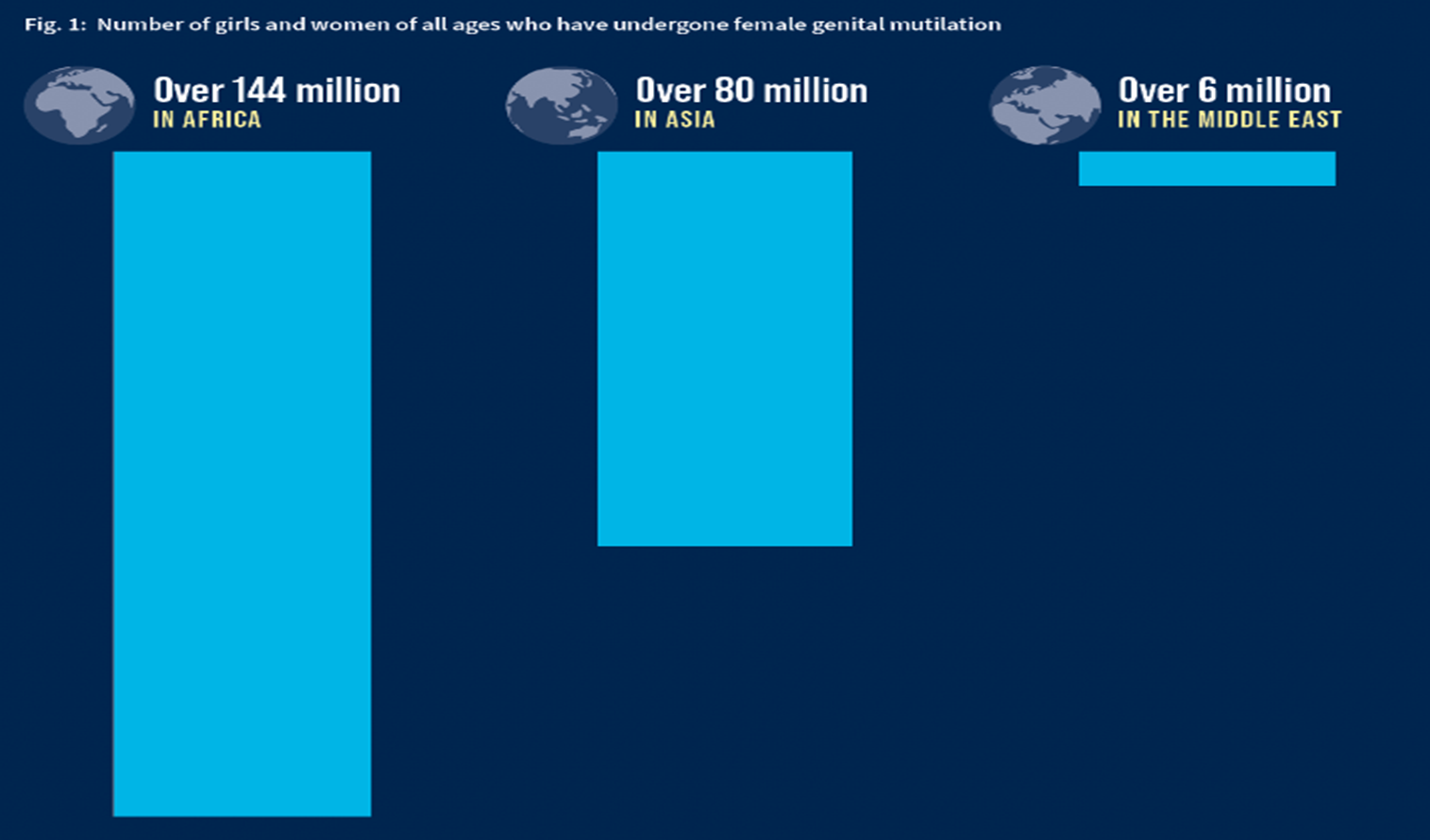UNICEF, (2024).
The figure above illustrates the percentage of girls and women aged 15 to 49 who have undergone female genital mutilation (FGM) in various countries. This practice is deeply rooted in certain countries, such as Somalia, Guinea, and Djibouti, where nearly all women and girls in this age group have experienced the procedure. Somalia has the highest prevalence, with an overwhelming 99%, followed closely by Guinea at 96% and Djibouti at 90%.
In stark contrast, countries like Uganda, Cameroon, and Niger report the lowest prevalence rates. Uganda, with 0.3% of women and girls affected, along with Cameroon (1%) and Niger (2%), show that FGM is not widely practiced in these countries but is concentrated within specific communities. These figures indicate that the practice is not deeply embedded across the broader population, remaining limited to particular communities and groups.
Changing Dynamics of FGM
The lowering of the age at which female genital mutilation is performed has introduced new challenges to current prevention strategies. According to Dr. Wisal, interventions aimed at shifting social norms remain relevant, but new approaches must focus on targeting girls and women during pregnancy, postpartum, and early childhood through antenatal and immunisation programmes. These are high-coverage programmes that present opportunities for influencing decision-making and monitoring trends in FGM practices at younger ages.
Cultural, Economic, and Political Factors
Considering the significant variations in FGM prevalence between countries, Dr. Wisal underscores the importance of understanding the cultural, economic, and political factors that influence these differences. For instance, FGM can be driven by beliefs around preparing girls for adulthood, maintaining family honor, increasing marriageability, promoting femininity and cleanliness, or following religious customs.
Tailoring interventions to each unique context is crucial. Dr. Wisal points to evidence-based practices that show promising results in altering attitudes towards FGM. These include:
1. Community dialogues with parents, religious leaders, and health workers that address the specific social norms in each context.
2. Media and social marketing campaigns designed to change attitudes toward FGM abandonment.
Scaling up these interventions, while improving their effectiveness through innovation and additional research, is essential to translating attitudinal changes into real shifts in behaviour.
A Call to Action: Accelerating Efforts to End FGM
The findings of the UNICEF 2024 research highlight the urgent need for increased global efforts to eliminate FGM. Although significant progress has been made, the current rate of decline is insufficient to meet the UN’s Sustainable Development Goal (UN SDG).
Achieving this goal will require not only more rigorous and culturally relevant strategies but also stronger legal enforcement, improved education, and substantial support for survivors. Additionally, addressing the deep-rooted gender inequalities that perpetuate the practice is crucial. Dr. Wisal emphasises the need to scale up current programmes using cost-effective approaches, including new partnerships with the private sector, and integrating FGM interventions within broader initiatives. Additionally, better coordination and movement-building at multiple levels will be essential for accelerating progress.
The fight against FGM has not ceased, but with renewed commitment and global cooperation, millions of girls and women can be protected from this harmful practice.
As the world approaches 2030, the message is clear: now is the time to act. Without significant and immediate action, millions more girls and women will continue to suffer the irreversible consequences of FGM.





